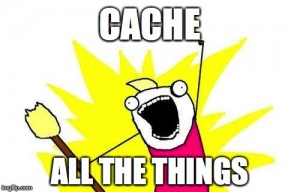Continuing in this series of blog posts taking a bit of a “warts and all” view of a few Amazon AWS features, below are a handful more tips and gotchas when designing and implementing solutions on Amazon AWS, including AWS S3, Tags / Tagging as well as ASG (Auto-Scaling Groups).
For the first post in this series with a bit of background on where it all originated from, see here:
http://tekhead.it/blog/2016/02/amazon-aws-tips-and-gotchas-part-1/
For more posts in this series, see here:
Index of AWS Tips and Gotchas
AWS Tips And Gotchas – Part 3
- Individual S3 buckets are soft limited to 100 concurrent write transactions per second, and 300 reads initially and only partition as the storage performance quantities grow over time. This sounds like a lot but when you consider the average web page probably consists of 30-60 objects, it would not take a huge number of concurrent users hitting an application at the same time of day to start hitting limits on this.
The first recommendation here, especially for read intensive workloads, is to cache the content from S3 using a service like CloudFront. This will immediately mean that for your object TTL you would only ever expect to see each object accessed a maximum of around 50 times (once per global edge location), assuming a global user base. A lot less than that if all of your users are in a small number of geographic regions.
Second, do not use sequentially named S3 objects. Assign a prefix to the start of each filename which is a random set of characters, and will mean that in the background, S3 will shard the data across partitions rather than putting them all in one. This is very effectively explained here:
http://docs.aws.amazon.com/AmazonS3/latest/dev/request-rate-perf-considerations.htmlThird, effectively shard your data across multiple S3 buckets in some logical fashion, ensuring you are also roughly spreading the read and write requests equally between them, therefore increasing your maximum IO linearly with every additional S3 bucket. You would then potentially need some form of service to keep a track of where your content lives; a common method for this is to store the S3 object locations in a DynamoDB table for resilient and fast retrieval.
For extra fast retrieval you could also cache these S3 locations in memory using Elasticache (Memcached/Redis).

If you go down this route and assuming older data is less frequently accessed, I suggest you rebalance your data when new S3 buckets are added, otherwise you risk having hot and cold buckets, which defeats the objective of sharing them in the first place!Even better, just start with a decent number of S3 buckets anyway, as the buckets themselves are free; you are only charged for the content stored inside them! This, of course, adds some complexity for management and maintenance, so make sure you account for this in your designs!
Lastly, use a CDN! That way your object access hit counts will be far lower, and your users will get improved performance from delivery of content from local pops! 🙂
- If you are using Tags as a method to assign permissions to users or even prevent accidental deletion of content or objects (something I’m not 100% sure I’m convinced is bullet proof but hey!), make sure you then deny the ability for users to modify those tags (duh!).
For example, if you set a policy which states that any instance tagged with “PROD” may not be deleted without either MFA or elevated permissions, make sure you deny all ability for your users to edit said tags, otherwise they just need to change from PROD to BLAH and they can terminate the instance.

- This is a configuration point which can cost you a wee chunk of change if you make this error and don’t spot it quickly! When configuring your Auto-Scaling Group make sure the Grace Period is set sufficiently long to ensure your instances have time to start and complete all of their bootstrap scripts.
If you don’t, the first time you start up your group it will boot an instance, start health checking it, decide the instance has failed, terminate that instance and boot a new one, start health checking it, decide the instance has failed, etc (ad infinitum).
If your grace period is low this could mean spinning up as many as 60 or more instances in an hour, each with a minimum charge of an hour!Instead, work out your estimated Grace Period and consider adding an extra 20% wiggle room. Similarly, if your bootstrap script has a typo in it (as mine did in one test) which causes your health checks to fail, Auto-Scaling will keep terminating and instantiating new instances until you stop it. Make sure you have thoroughly tested your current bootstrap script prior to using it in an Auto-Scaling group!
Update: One last point to highlight with this is some sound advice from James Kilby. Be aware as your environment changes that a sufficient grace period may be enough day one, but it might not be later on! Don’t set and forget this stuff, or you may find you come in one day with a big bill and a load of lost revenue when your site needed to scale up and couldn’t!
Find more posts in this series here:
Index of AWS Tips and Gotchas
Amazon AWS Tips and Gotchas – Part 4 – Direct Connect & Public / Private VIFs




 RSS – Posts
RSS – Posts